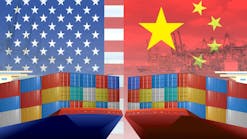S&P Global: OPEC+ production increase plans come amid market oversupply concerns
Despite concerns about a potential market oversupply, OPEC+ is set to increase production due to a combination of foreign investor interests from without and the need for unity within, according to S&P Global Commodity Insights.
The latest S&P Global Commodity Insights Global Crude Oil Markets Short-term Outlook assumes that OPEC+ will increase production by a cumulative 1.4 million b/d by late 2025 compared with third-quarter 2024. That is less than the full 2.5 million b/d increase that was announced by OPEC+ at the June meeting, but still substantial given decelerating global demand and continued (albeit slower) production growth from non-OPEC+ countries.
S&P Global Commodity Insights expects world crude oil and condensate production growth of 2.3 million b/d in 2025—far exceeding projected crude oil and condensate demand growth of around 550,000 b/d.
"In 2024, OPEC+ production cuts offset production growth elsewhere. Now, with some of those cuts poised to go away, will OPEC+ choose volume over price and no longer defend prices around $80/bbl? The answer is coming soon," said Jim Burkhard, vice-president and head of research for oil markets, energy and mobility, S&P Global Commodity Insights.
According to the agency's base case, Dated Brent average monthly prices are expected to decline to the $70s in 2025, down from $81/bbl in August 2024. Prices may fall even further if supply surpasses expectations or if demand weakens more than currently anticipated.
That OPEC+ is now poised to increase production stands in contrast to October 2022—when the group cut production with prices at $90/bbl. Two probable reasons for the shift stand out, according to the analysis.
One, foreign oil companies have invested billions of dollars to support expansion of oil production capacity in several key OPEC+ participants—including the United Arab Emirates (UAE), Iraq, and Kazakhstan. S&P Global Commodity Insights counts more than 20 foreign oil companies that have a share of upstream oil production in the UAE. For Iraq and Kazakhstan, the tally is more than 30 companies each.
"The aim of foreign investors is not to spend billions of dollars on new oil wells and then shut them in. This dynamic is a perennial challenge in the oil business. Increasing output from a new investment has logic of its own, but it can, at times, contribute to a larger oversupply," said Burkhard.
A second factor is that increased production is needed to maintain unity. Without it, some countries could increase output anyway. It would likely prove more difficult to restore unity after that happens than to maintain it now, according to the analysis.
"OPEC+ has been remarkably successful so far in 2024 in fine-tuning its supply to help keep prices trading in a tight range, except for short-lived spikes and sharp dips triggered by geopolitical and geoeconomic forces beyond its control. Signaling to the market that they are no longer going to defend $80/bbl prices may prove to be the cost of unity," Burkhard continued.

